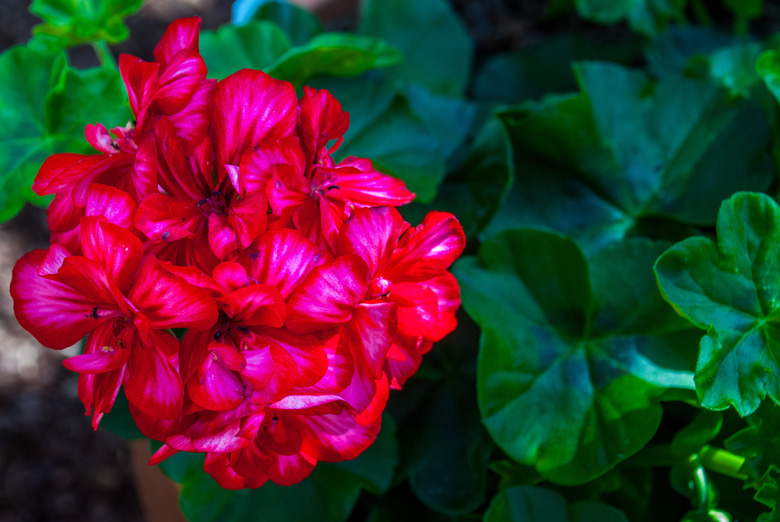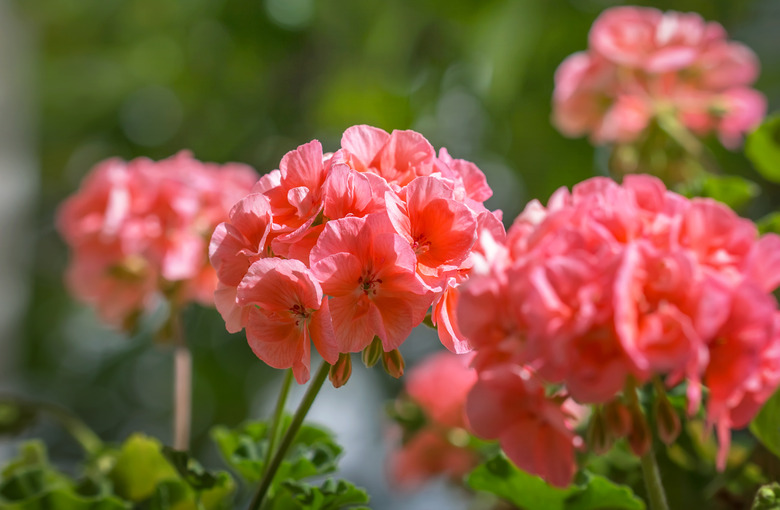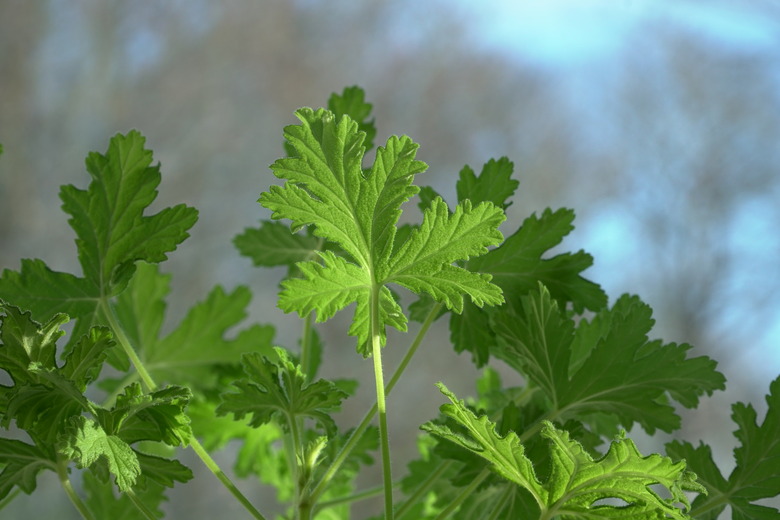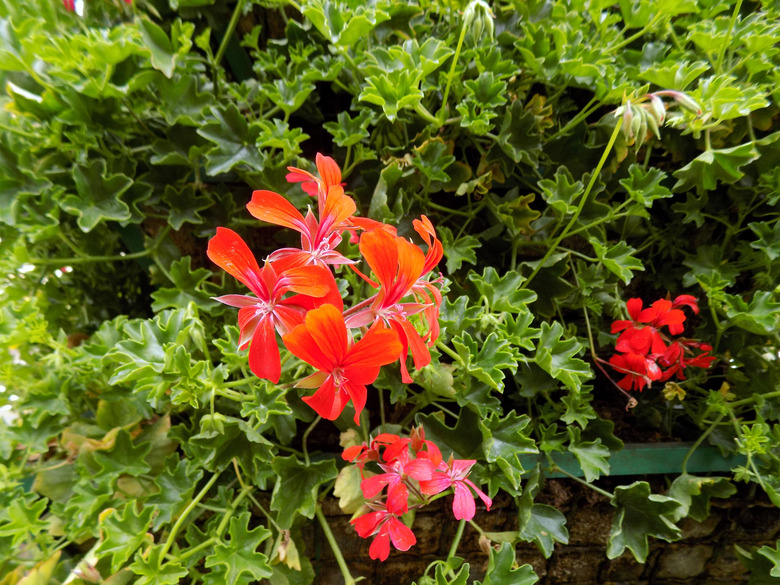How And When To Prune Garden Geraniums
Keeping geraniums in peak condition is mostly a matter of deadheading the blooms—removing the spent blossoms—once they're past their prime. In most areas of the United States, the plants typically called geraniums are annuals, so they don't need to be cut back at the end of the growing season. Other than routine deadheading, pruning is usually only necessary to shape the plants and to remove unhealthy stems.
The Garden Geranium: Not a True Geranium
The Garden Geranium: Not a True Geranium
The common geranium plant found in garden centers, home gardens and plant pots isn't really a geranium at all; its a pelargonium. Both pelargoniums and actual geraniums are in the Geraniaceae plant family, but true geraniums such as the cranesbill are perennials, coming back year after year. They also look a bit different than common garden "geraniums." The typical pelargonium or garden geranium is an annual, except in USDA plant hardiness zones 10 and 11, where it grows as a perennial in ideal warm conditions. Even though garden geraniums are annuals in most zones in North America, they can be grown year-round if kept in pots and brought indoors during cold months.
Deadheading Old Blooms
Deadheading Old Blooms
Deadheading, the practice of removing dead blooms, is one of the most important ways to keep a geranium plant looking its best. It's also healthy for the plant, as it helps promote more blooms. Leaving dead flowers on the plant can lead to insect and fungal issues.
Inspect the plant at least weekly, looking for old, wilted flowers. Geranium flowers grow in clusters, and proper deadheading involves removing the entire wilted cluster. Snap the wilted stem off just above where it meets the sturdier stem it grows from, using your fingers to pull the thin stem downward while holding the stronger base stem. Be careful not to damage the stronger stem. Hand pruners such as hand bypass shears or sharp, clean scissors can be used if you prefer to use a tool. Experiment with both methods if you're dealing with a lot of geranium,s to find out which method is fastest and easiest for you.
Removing individual brown flowers, instead of waiting for the entire cluster to brown and wilt, is also an option if you want to keep the flower garden looking fresh and vibrant.
Place the removed flowers and stems either in a compost pile or in a yard waste bag rather than leaving them on the ground near the geraniums. Decaying plants left near live geraniums can cause fungal growth on otherwise healthy geraniums.
Pruning Leggy Geraniums
Pruning Leggy Geraniums
While this a more common issue with ivy-style and indoor potted geraniums, a garden geranium that doesn't get enough light may become "leggy," with large gaps between leaf nodes on each stem. Prune each leggy stem to just above a leaf node to encourage new growth, which will help the plant fill out. Use bypass hand shears or your fingers to prune or pinch the stems. This also helps maintain the plant's shape.
If the plant is in a garden bed that doesn't get enough light, you can remove any obstructions blocking the light, or trim back other plants that may be creating too much shade for the geranium. If the leggy geranium is in a pot, move it to a sunnier location.
Pruning Geraniums for Shape
Pruning Geraniums for Shape
A typical garden geranium generally requires little pruning since it is an annual. If you want to help it retain a somewhat symmetrical shape, pinch off stems that are significantly taller than the rest if they throw off the balance of the desired shape. As with pruning leggy geraniums, cut or pinch the stems off just above where they connect to a stronger stem.
Varieties known as ivy geraniums tend to sprawl and cascade if placed in baskets or in a garden where they have room to grow. Allow these to sprawl for a while for a lush look, or cut back the longest stems if the plant gets out of control. Geraniums with the term pillar in their names tend to grow upward more than outward, so "leggy" stems are to be expected. Some varieties reach 18 to 30 inches tall. Encourage a tall central area on a young pillar geranium by pinching off some of the excessive branching stems as they start to grow. Once well established, the plant should be full of both leaves and blooms. As with any geranium, deadhead ivy and pillar geraniums weekly.
References
- Gilmour: Geranium Care
- Rozanne and Friends: What's the Difference Between a Zonal, Pelargonium and Hardy Geranium?
- Today's Homeowner: How to Grow Geraniums Over the Winter
- Plant Care Today: Tips for Deadheading Flowers
- University of Minnesota Extention: Growing Geraniums as Annual Flowers in Minnesota
- Chalet Nursery: Pillar Pink Geranium



